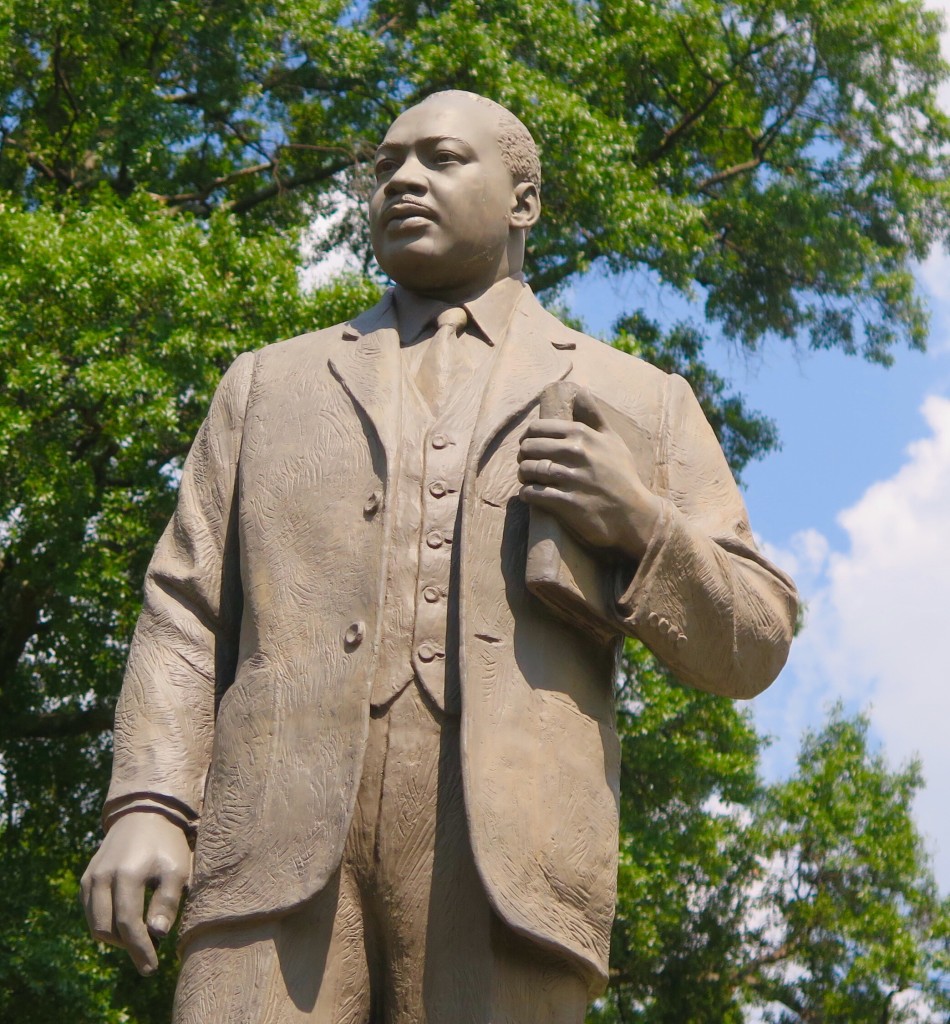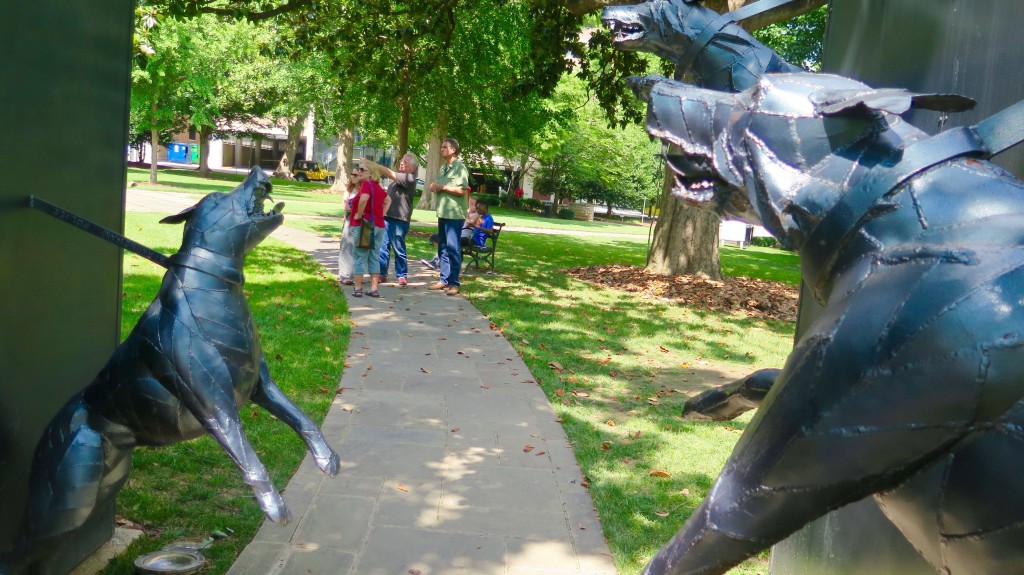
BIRMINGHAM, Al. — The weekend before the pastor was assassinated and eight other African American adults were murdered in a church basement in Charleston, South Carolina, I spent the afternoon studying the exhibits at the Birmingham Civil Rights Institute. The 23-year-old museum is a journey in photographs, videos, and artifacts of the dangerous struggle in the mid-20th century for justice, voting rights, and equality in Alabama’s largest city, and across the American South.
A few of the exhibits were particularly striking. A satin white hooded robe worn by a Klan member. Spider Martin’s iconic black and white photographs of the 1965 march from Selma to Montgomery. The arresting and infuriating historic videotaped interviews from the 1960s of prominent white Birmingham business and professional leaders discussing what they viewed as the deficiencies of intelligence and behavior of black residents.
Behind me an African American woman whispered to her husband, “Things really haven’t changed much, have they?”
Still, of all the messages conveyed by the Institute’s curators, one held particular resonance with me. It was the clear and strident war cries, conveyed on signs and billboards, articles and editorials, urging Alabama’s white leaders and residents to resist integration principally by declaring white supremacy, states rights, and open, armed, and steadfast defiance of the federal government.
Things haven’t changed much, have they? Before the Charleston massacre on June 17, conservative insurgents were angrily declaring their disrespect for the country’s first black president with false assertions about his birth as a foreigner, and defying his policies on health, climate change, water quality, and clean energy with lawsuits that failed to persuade a conservative Supreme Court, and a forced government shutdown that hopefully dismays the majority of Americans who vote.

There’s more. Southern states, controlled by ideologically extreme legislatures, approved new and unconstitutional laws to degrade the capacity of blacks and Hispanic minorities to vote. The shootings and deaths of young black men and boys by hair-string wired police officers in Ferguson, Cleveland, and Baltimore revealed a sick fever in the country. Republican Donald Trump leads his party’s primary polling on messages of racism directed at Latino immigrants. And President Obama was greeted in Oklahoma with a display of Confederate flags, now the acknowledged and primary symbol of white racial pride.

It took great courage and magnificent leadership in and out of government in the 1950s and 1960s to pass the Voting Rights Act, and to secure the rights of women to compete on the playing field and the office. The country has shown that same capacity in the 21st century to advance the rights of gays and lesbians to lead lives of dignity and distinction, and to marry.
Make no mistake. In the domain of religious zealotry, racial purity, and states rights a sizable faction of Americans oppose what it means to be an American in full.
They are a minority with influence and commitment. In the last national election in 2014, 32 percent of eligible voters cast ballots. In a democracy, 50 percent plus one wins. Which means that the Confederate flag lovers, Obama haters, white racial pride promoters, health care law haters, government shutdown supporters controlled who gained entrance to state legislatures and Congress with 16 percent of eligible voters plus one. That’s why one major party is so devoted to turning out its base and discouraging or outright preventing people who aren’t the base from voting.
The Birmingham Civil Rights Institute’s exhibits are a vivid reminder of the pain that occurs if America allows that insurgent race-conscious, nativist, climate denying, immigrant hating faction to exert its influence. Things haven’t really changed much, have they?
— Keith Schneider


